THE late American actor W.C. Fields famously advised: “Never work with children or animals.” But while generations since have heeded his advice, 2018 NSW Farmer of the Year finalists Gavin and Karina Moore have thrown caution to the wind by opening their dairy farm up to educational tours.
The Moores, who were recognised in the awards for their efficient, productive and sustainable business model, regularly welcome bus loads of schoolchildren onto their Gavana Dairy Farm at Glenmore, near Camden in Greater Sydney, where the youngsters get the chance to pat calves, hand-milk cows and learn that food isn’t grown on supermarket shelves.
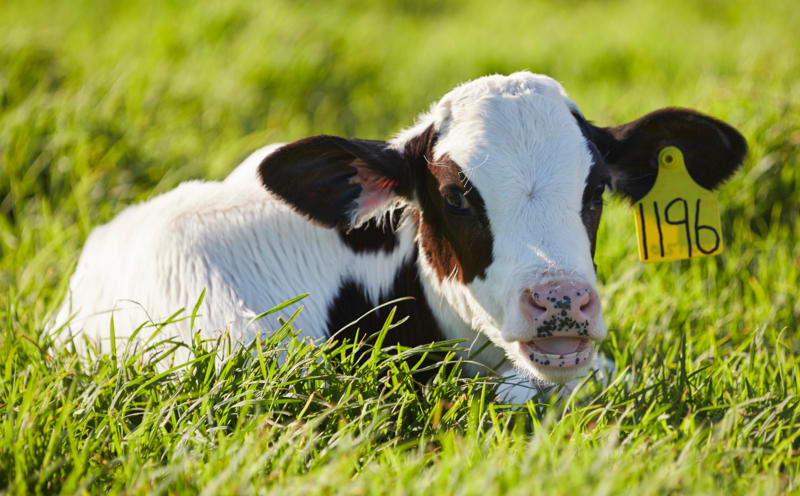 One of the Moores’ Holstein calves.
One of the Moores’ Holstein calves.
The children emerge from the bus, clapping hands over their noses and complaining about the stink, but leave declaring it “the best excursion ever”. Good reviews aside, why invite Sydney’s fiercest critics onto the property? The Moores only charge enough to cover their costs, so it’s not for the money. “It’s always been a big thing for us – teaching kids about farming and all its different facets,” says Gavin.
Karina and Gavin met at university, where she was studying nutrition and he agricultural science. Karina worked in the education system until her three children – Josh, now 15, Luke, 18, and Nathan, 20 – came along. “A lot of kids don’t know where food comes from. They think it just comes from the supermarket,” she explains. “We had a facility and thought we could do something about that.”
Their farm is so close to the city that on a clear New Year’s Eve they can see the Sydney fireworks from their hill, so they knew it would be an easy journey for schoolchildren. Initially, health and safety considerations seemed to present a challenge, but the farm’s insurance broker and legal team produced a risk assessment document to show what the Moores could do under their insurance policy without attracting massive premiums. This also proved useful in reassuring teachers.
With those concerns out of the way, a new dairy was built in 2007 so both cows and kids would be comfortable. The old dairy was converted into an education centre and the Moores bought butter churns and milk separators to add to the historic atmosphere. Sadly, health and safety regulations meant the lovely old cobblestones had to be covered with a concrete slab. Disabled toilets were installed and children with physical and intellectual challenges have been welcomed to the farm.
RELATED:
Byron Bay dairy diversifies into farm tourism
Teacher friends helped work out the curriculum. Karina says a typical tour will cover history, science, geography, maths and nutrition, with the children hardly noticing what a comprehensive education they’ve received. Primary schools have a set topic, From Paddock to Plate, part of which Gavin helped write for the NSW school curriculum in 2005 – so that’s also made life easier.
Paddock to Plate: providing a comprehensive education
A typical school visit consists of a 30-minute talk about the farm and how a cow’s body produces milk. The children are then taken onto the viewing platform and down into the herringbone dairy so they can see a cow from above, below and side-on, and put what they’ve been told about udders or microchipping into context. They discuss what the new dairy looks like compared to the old hand-milking one, and then a couple of children are selected to feed a cow and open the gate for her to come into the stall.
“I give a demonstration of hand-milking and anyone who wants to can have a turn,” says Gavin. “We use the most passive cows who don’t mind the kids handling them or a bit of noise. Hopefully she doesn’t poo on them and everything is good. Only one little girl has ever got hit in 11 years, so I reckon I’ve done pretty well!”
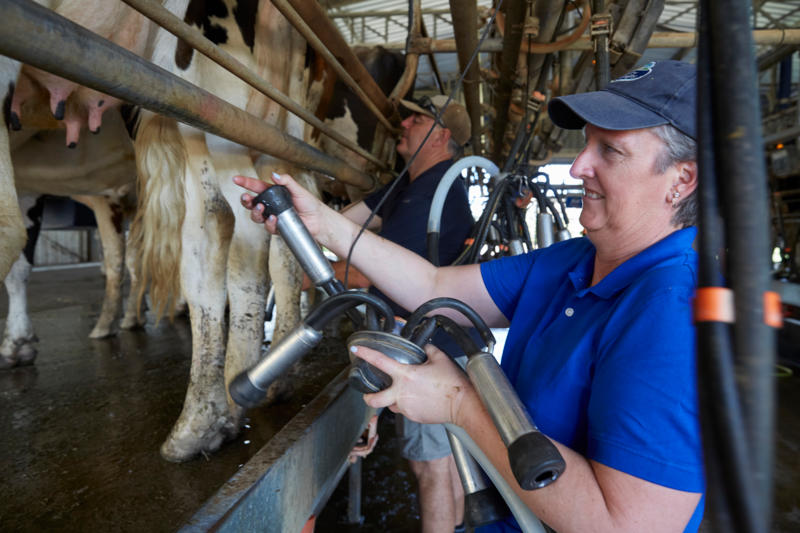 Karina hard at work milking.
Karina hard at work milking.
After collecting milk the old way, Gavin shows how modern milking is done. Later, the kids return to the shed to find out what happens to the milk after it leaves the farm and the children are taught about the different products made from milk and why the calcium, protein and fats it contains are good for humans. Finally, they watch a short DVD showing how the milk goes from farm to factory to supermarket.
Gavana’s milk has an initial journey of only 20 minutes to the Country Valley processing plant in Picton. Dairy farmer John Fairley built the plant after the
deregulation of the dairy industry in 2000 to produce his own milk and dairy products.
In 2005 he started buying the Moores’ surplus milk, anything left over from their contract with Dairy Farmers. Then in 2012, John asked them to increase the supply. Gavin’s contract with Dairy Farmers only had 90 days to run and when John offered him an 18% price increase, “it was a no-brainer”.
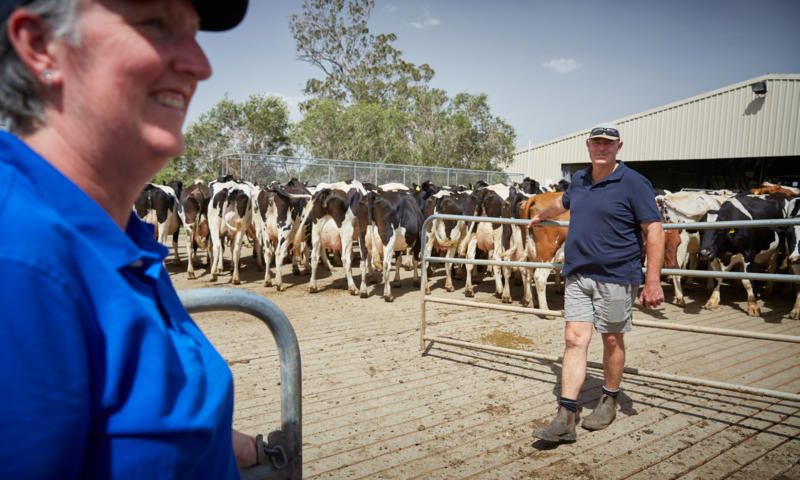 The cows gathering at the milking entrance. Gavin and Karina supply Country Valley with 1.6-1.8 million litres of milk a year.
The cows gathering at the milking entrance. Gavin and Karina supply Country Valley with 1.6-1.8 million litres of milk a year.
“We now supply Country Valley with 1.6-1.8 million litres a year,” says Gavin. “Because he pays a flat price throughout the year, and we don’t have variables for fat and protein, it makes it easier to budget. Our feed is forward-contracted every 12 months, so we know exactly what our income and outgoings will be every month.”
The positives of educating children about agricultural practices
At the end of the tour, the children do a blind tasting so they can compare Country Valley with supermarket milks.
“Nine out of 10 will screw their noses up at the supermarket milks. They’ll struggle to explain why, but our milk is creamier, nothing is taken out and it doesn’t have that burnt flavour from being heat treated.”
“The dairy industry is struggling with the price war between Coles and Woolworths, so it’s about making the consumer aware there’s a range of milks. It encourages awareness of how much difference is out there, and hopefully that transfers to other produce they buy.”
As well as school and university groups, Gavana hosts up to 1,500 visitors a year from Japan, China and Korea – often groups with specific interests, such as agricultural investment in their own country. “We tailor delivery to those groups and it’s really intensive,” Gavin says. It’s also more profitable, with a charge of $220 per group.
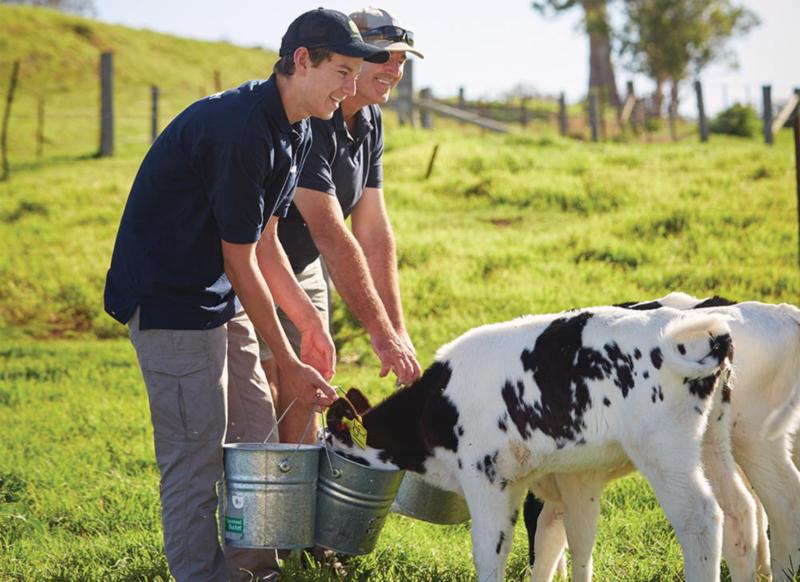 Josh (left) and Gavin feed milk to the Holstein calves.
Josh (left) and Gavin feed milk to the Holstein calves.
Gavin and Karina run their 160-hectare farm in partnership with Gavin’s father, Rowan – a man with a long interest and involvement in the political dairy scene, and research and development. He is responsible for a range of initiatives and improvements including better genetics, pasture, feeding and milk production. What did he make of this latest project? “He’s supportive,” Gavin says.
“He has his moments, because I’m with the schoolkids from 10am to 2pm and he says: ‘There’s not a lot getting done on the farm’. However, he knows educating kids about dairy is really important and now we have a couple of full-time workers it eases the pressure.”
With the drought keeping the Moore family busier than ever, hopefully pester power is improving sales of Country Valley milk. But Karina insists that “knowing we’ve planted a seed in some of those kids” is all the reward they need.
“We show them our industry is broad and I tell them: ‘You might not want to milk cows when you grow up, but you might develop a piece of technology we can use on the farm or an app that will make our life easier.’”
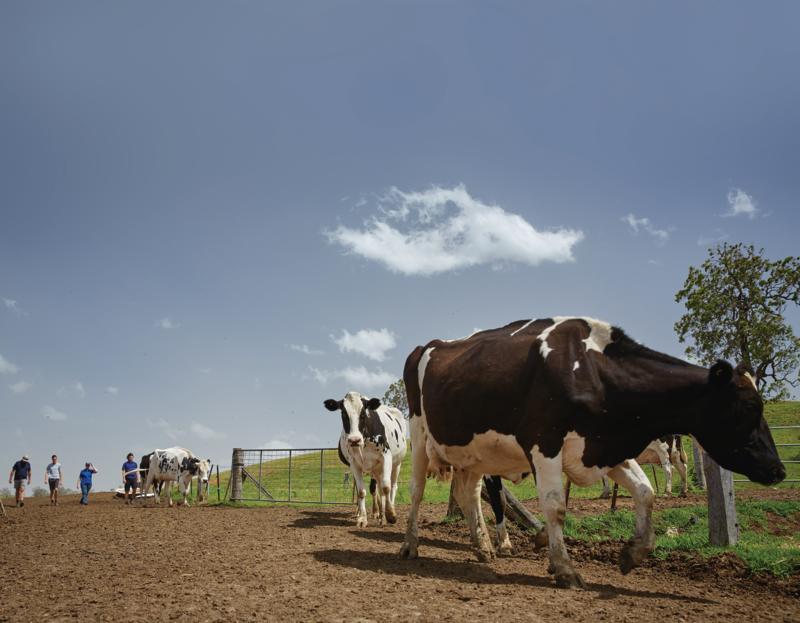
The cows are herded down to the dairy for the afternoon milking.
Interestingly, too, now agriculture has been made a
compulsory subject for Years 7 and 8 in NSW public high schools, with Years 9 and 10 curriculums also under development, Gavana could come into its own.
Many in the education sector have voiced concerns that city schools don’t have the access to animals and growing facilities that their country counterparts do, which means a reliance on online facilities or initiatives such as FaceTime a Farmer. Being so close to Sydney, Gavin and Karina could find themselves in greater demand than ever.
RELATED:
The preschool filling a gap in rural education
High tech dairy designed to further education
The dairy was commissioned in 2007 with cow comfort and viewing facilities in mind. “It’s all computerised so all we do is put cups on cows and computers do the rest,” Gavin says.
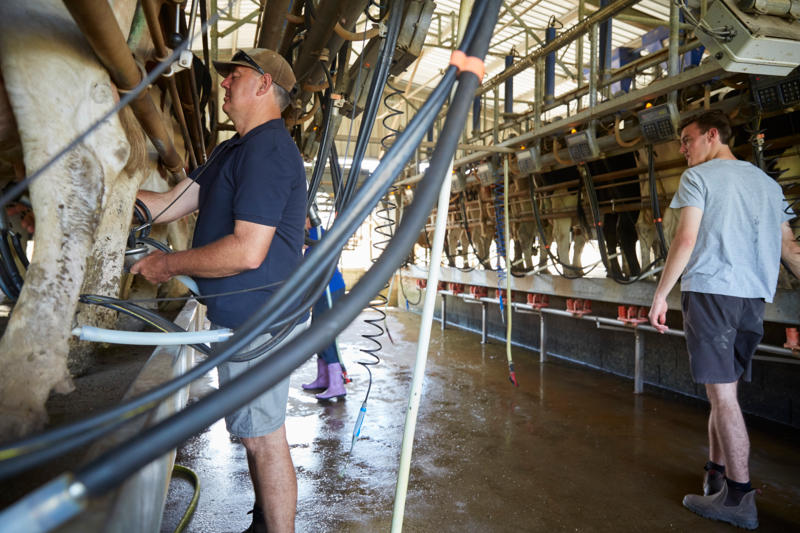 The computerised dairy, which was built in 2007.
The computerised dairy, which was built in 2007.
- The milking pit is 1.5m wider than normal so staff can work alongside up to 120 schoolchildren – with no danger of tubes accidentally being pulled out.
- Machinery is positioned away from the pit so tour groups can still hear Gavin speak. Computerisation means that cows can be milked with only one operator present, if need be.
- Exits are 1.5m wider than normal to allow easier access for cows. The stalls have a 2% slope to encourage cows to exit faster.
- The holding yard can take 300 cows, so there is room to expand.
- Computerised pads register each cow via a microchip and record how much milk they produce. All milk flows into a 14,500-litre vat that is emptied every two days.
Artificial insemination increases conception rate
A focus on genetics is one of the practices that makes the Moores’ farm thrive. Three years ago, they started doing a lot of IVF work and are now seeing a 58% conception rate – about the same as embryo transfer, but at a lower cost.
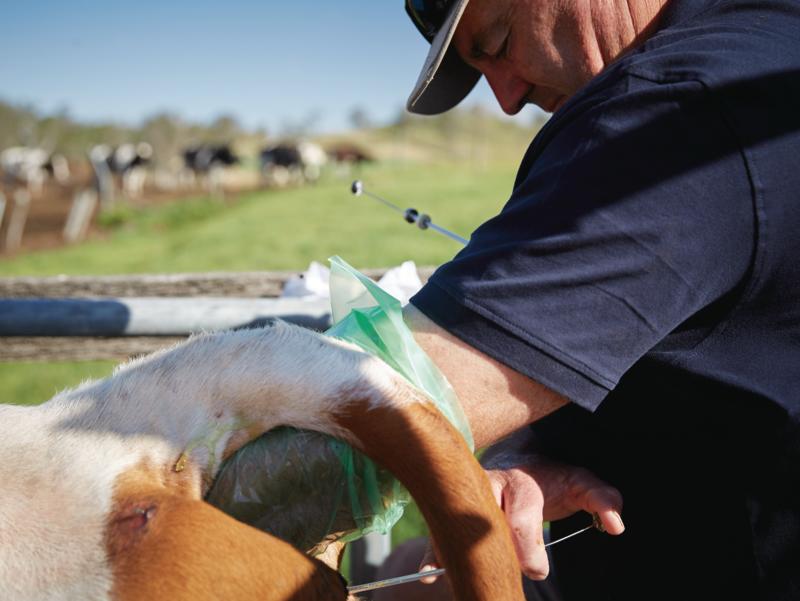 Gavin artificially inseminates a cow.
Gavin artificially inseminates a cow.
Over the past 18 months they’ve also gone back to old-school genetics using frozen semen from sires that were around in the mid 1960s and 1970s. This is due to Gavin’s belief that modern genetic traits are going in the wrong direction.
“We want to bring back the grunt of the old dairy cow in terms of survivability,” he says.
“We believe Holstein genetics have become too frail for Australian conditions. Our cows aren’t kept in barns. They need to walk. They need good feet and legs and strong bodies to tackle hills and to graze. We want cows that will survive for 10 or 11 lactations, not break down at five or six.”
“We’re probably 18 months away from seeing data in terms of milk production, but the health traits have been very positive. The heifers with older-style genetics are thriving and not getting sick so easily, so it’s already reducing the cost of vet bills.”
“They’ve got strong, wide chests and good hindquarters. Two of the daughters look so handy, we might take them to our local show next year.”
The Moores also have a strong focus on the environment. The new dairy was constructed using the natural fall of the land so that all effluent is collected through underground pipes that link up with waste from the yard wash-down.
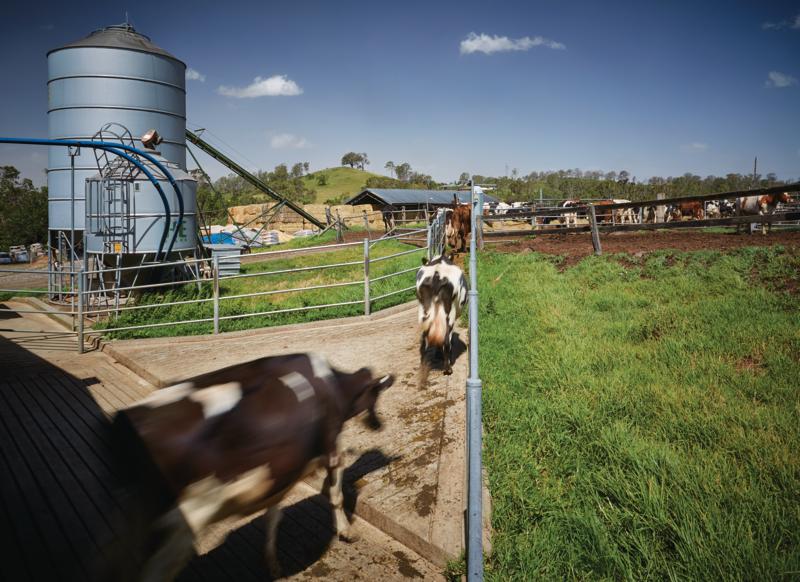 Cows leave the dairy after milking and head for the feeding platform.
Cows leave the dairy after milking and head for the feeding platform.
The system is based on a two-pond and solids trap set-up. The effluent flows through the trap to filter out up to 95% of solid material and then flows through the first anaerobic pond into a second aerobic pond. From there, an irrigation pump transfers the filtered waste water out onto the pastures.
RELATED:
The power of pig poo
The solid material is stored – usually for four-to-six weeks – before being spread on the paddocks. This means there is no run-off from the dairy and resulting nutrient levels in the soil have increased plant growth and cut fertiliser costs by 50%, saving more than $20,000 a year. In a good year, the farm produces 1,100 round bales of
silage, equating to 18-months’ supply.